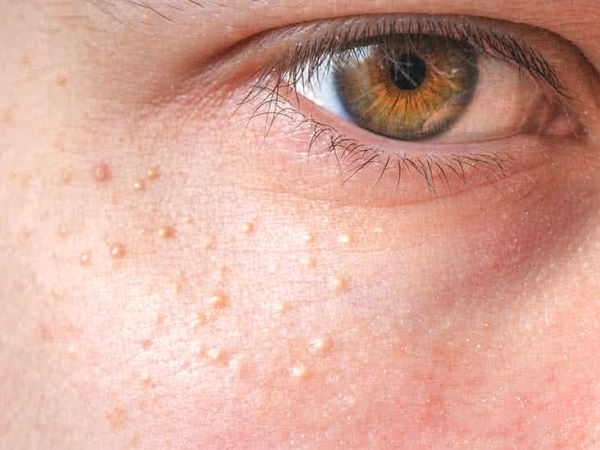Milia are also commonly known as ‘milk spots’ and are medically termed ‘ milium cysts’.
These raised, white or yellowish spots tend to be quite small, but most often numerous.
They often appear on the nose or cheeks and are particularly common in newborns, but can also affect older children and adults.
How milia develop
In adults, milia are caused by sweat glands becoming blocked with trapped oil and keratin (a strong protein found in skin, hair and nails). They look a bit like whiteheads, but don’t pass away as quickly. Milia tend to follow from some kind of skin damage such as burns, blistering, steroid creams, sun damage or skin resurfacing.
Are they worrying?
Milia are not harmful or dangerous and generally cause little discomfort, although they can become irritated especially if treated inappropriately. Left alone, milia may pass without treatment eventually, but this can take many months or even years. Many adults are keen to get rid of them due to their unpleasant appearance and therefore seek professional treatment.
Treating Milia
Milium cysts may be treated in a number of ways, depending on the nature of the problem:
- Laser treatment – laser works by destroying the cysts and also stimulating the skin’s own healing and renewal processes, leaving skin clearer and healthier-looking
- Cryotherapy – liquid nitrogen is used to freeze the spots so that they drop off
- Microcautery laser – intense heat to destroy the cysts
- Medication – topical retinoid may be suitable for treating milia
- Chemical peels or microdermabrasion – intensive exfoliation to strip away the outer surface of the skin, revealing fresher skin beneath and also stimulating the skin’s renewal processes
- Some doctors also offer scraping treatments or needle treatments to burst the cysts
It is important to carry out these procedures with great care in order to minimise the risk of long-term skin damage or scarring.
Milia treatment is available at Cosmedics Skin Clinics, where all treatments are carried out by skilled and experienced doctors.

